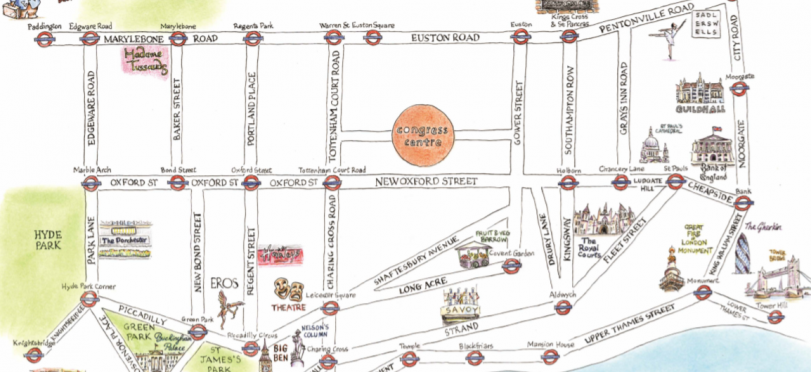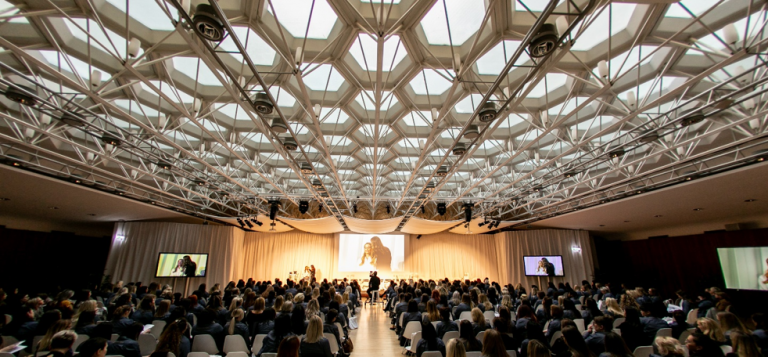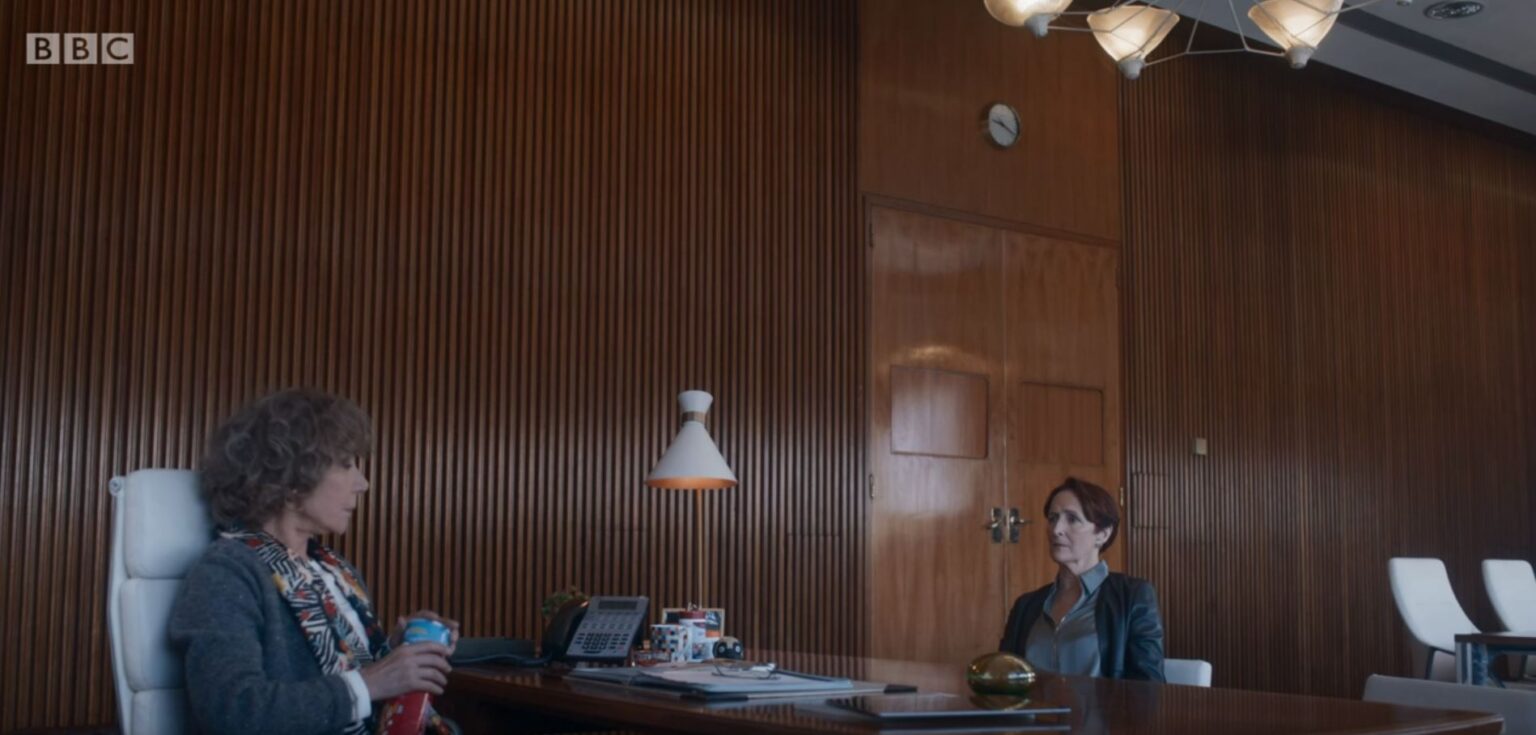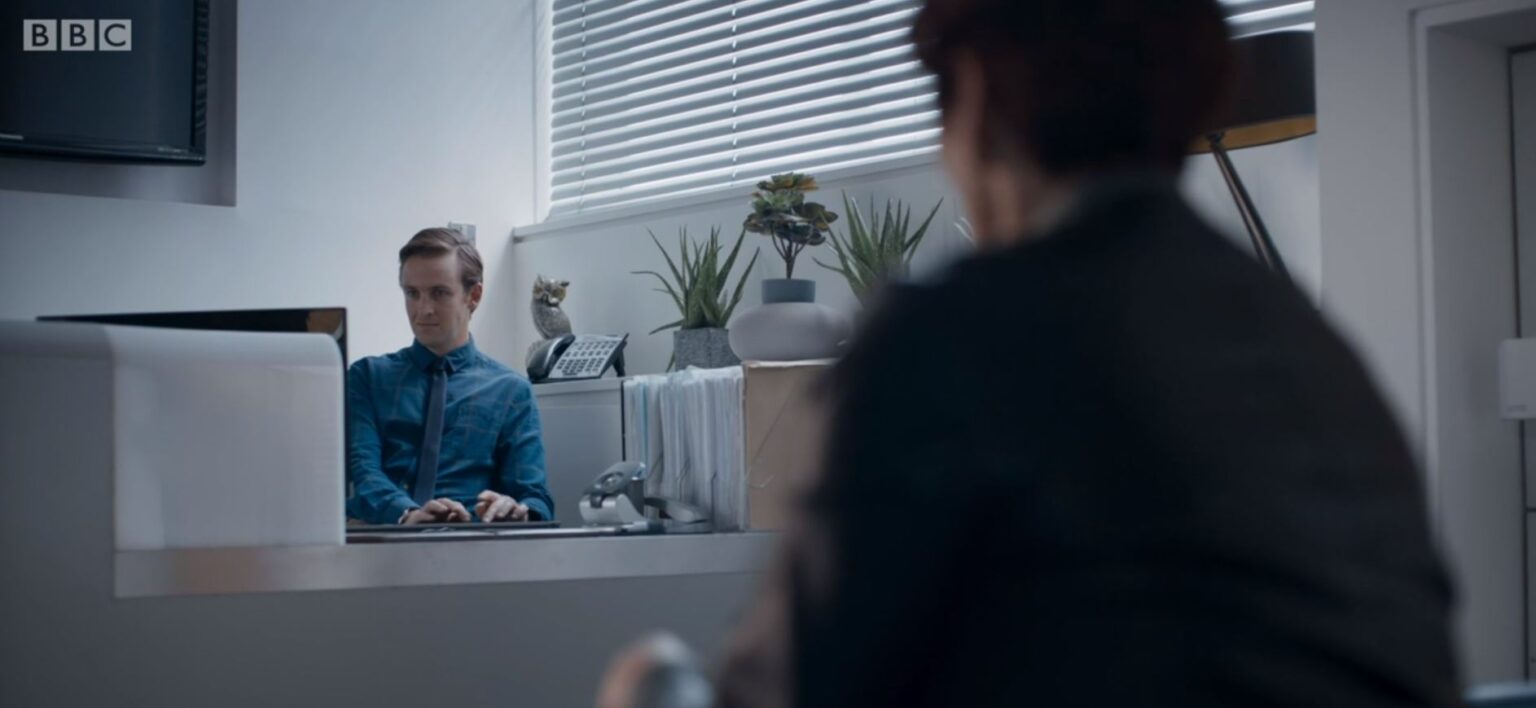
The origins of our London conference venue might be more historically significant than you’d expect. Built as part of Congress House in 1958, today it’s one of the longest-established, dedicated conference venues in London. Sandwiched between Mayfair, Covent Garden and Farringdon, Congress House serves as the headquarters for the Trades Union Congress, and has done ever since it was built.

While many of the conference venue’s original details have been preserved, its facilities have been kept up to date continuously over time; and as the needs of those who used it changed over the years, what the venue provided was adapted to meet them.
Today, Congress Centre is located within a busy commercial district and academic hub, as well as being surrounded by many famed, architecturally significant buildings and some of the London’s finest Georgian squares.
Yet 150 years ago the district had a completely different reputation. In 1822, John Parton described the surroundings of Dyott Street as ‘a picture of wretchedness scarcely to be equalled in any other part of the metropolis’. As part of the famous Rookery of St. Giles, the area was full of narrow, intersecting alleys that made finding your way around akin to navigating a rabbit warren.
Henry Mayhew later wrote ‘In Bainbridge Street, one side of which was nearly occupied by the immense brewery of Meux and Company, were found some of the most intricate and dangerous places of this low locality’. Tragically, the brewery (which covered part of the present TUC site) was the scene of a disaster. A vat containing enough porter to fill more than 3,550 barrels burst and flooded surrounding tenements and drowning several people.
In 1849, a block of flats called ‘Model Houses for Families’ was built as one of the earliest ventures into social housing to rehome those who were evicted from the Rookery, and the structure still stands beside Congress House today.
The idea for Congress House originated at a debate held during the 1944 Congress in Blackpool. It was unanimously agreed that a fitting memorial should be constructed to honour the heroism and gallantry displayed by trade unionists in the Second World War. As the debate continued, the initial proposal was expanded to make the memorial a building with the facilities for a headquarters for the TUC as well as a conference hall and meeting rooms for trade unionists.

As time went on the proposal continued to grow, eventually being seen as an opportunity to raise interest in the general arts and particularly architecture, after a competition was held for the public to the design the new memorial building.
The Great Russell Street site was obtained in 1946 and subsequently, the General Council launched an architectural competition to design the new memorial building. It was the first competition of its kind post-war and attracted a total of 181 entries. These were exhibited for judging in 1948.
The winner, David Du R Aberdeen, was appointed as head architect for the project. His winning entry proposed a central courtyard allowing natural light into the basement where the Congress Hall was to be located. This was an important feature architecturally for a number of reasons cited by Aberdeen:



A recent link to the centre’s architectural past, the prior director of Congress Centre was Martin Aberdeen who is the great nephew of David Du R Aberdeen.
However, there were a lot of restrictions to take into account for the final design and build. The 25,000 sq. ft site had narrow streets bordering three of its sides and the fourth would be adjacent to the red-brick YWCA building designed by Sir Edward Lutyens, with which Congress House had to work harmoniously.

On top of this, there were height restrictions and building controls to be considered too. In the end, these hurdles meant a five-year delay between the final design being signed-off and local authority issuing a license to allow Congress House to be built. Construction didn’t start until 1953 and took four years until it was completed in 1957 (although the first offices were occupied by the TUC in 1956).

The final design for Congress House had offices and committee rooms on three sides of the central courtyard, with the fourth wall (flanking the YWCA building) chosen as the Memorial Wall. This features a sculpture designed by one of Britain’s leading sculptors at the time, Sir Jacob Epstein. His powerful memorial is a pieta composition of a mother cradling her dead son, commemorating the sacrifices made by trade unionists in the World Wars.


Another statue was created for the building’s main entrance by Bernard Meadows, who was another outstanding sculptor of his generation. His bronze composition represents ‘the spirit of trade unionism as the strong help the weak’.
A magnificent horseshoe staircase was designed to lead from the marble memorial hall to the Congress Centre below, with floor to ceiling glass windows allowing for impressive views over the courtyard. The ground and upper level floors are filled with facilities including more offices, meeting rooms, full training facilities and classrooms with adjustable walls. There’s also a library for use by students and staff as well as a fully-equipped lecture theatre.

Some features donated to the venue during and after construction included:

By the 1980s, the TUC was enthusiastic to modernise their conference facilities within Congress house and generate additional income. They looked inwards at their impressive, sizeable conference rooms which included the 500 capacity Congress hall. After realising their potential appeal to the public as venue space for hire, Congress Centre began pushing themselves as a London conference and events centre. As awareness grew, so did business which resulted in the TUC being able to successfully secure the extra funding they needed.


Vast refurbishments took place throughout the London conference venue and headquarters in 1988. That same year, Congress House was added to the Secretary of State for the Environment’s list for buildings of ‘Special architectural or historic interest’ – one of the first buildings from the 1950s to be considered so. The citation for the judgement was:
“Widely regarded, at the time of its completion and since, as one of the most important institutional buildings erected in London in the 1950s reflecting the impact of Le Corbusier on the post war generation of architects.”
Secretary of State for the Environment, 1988
Since 1996, numerous refurbishment projects have taken place including major modernisation of the Congress Hall and other conference facilities, reconfiguration to several offices and meeting rooms including the General Secretary’s Suite, major upgrades to the main reception area, café and bathrooms as well as extensive work on the facilities to make them highly accessible. More recently, a transparent roof was installed above the central courtyard in order to facilitate the restoration Congress Hall’s original glass roof and conservation of original fabric used.
Today, Congress Centre plays host to dozens of events every year, from intimate board meetings to international conferences for 500 delegates, while still serving as the headquarters of the TUC.
The conference venue has most recently seen £250,000 invested into the AV equipment and facilities, ensuring it remains a state-of-the-art space to cater for any conferences or events. Congress Hall’s modern equipment now includes an 18ft dropdown screen, 32-channel digital sound desk, two 85” Panasonic plasma screens, an intelligent LED lighting system and more.

Meeting rooms such as the Council Chamber have an equally impressive tech spec and are popular for their original 50s features. The modernist spaces are used frequently as filming locations, recently including the BBC’s award-winning series Killing Eve as well as popular Netflix series, The Crown.


If you’re interested in holding an event at our London conference venue then makes sure you get in touch with the team on 020 7467 1318 or send them an email at congress.centre@tuc.org.uk.
